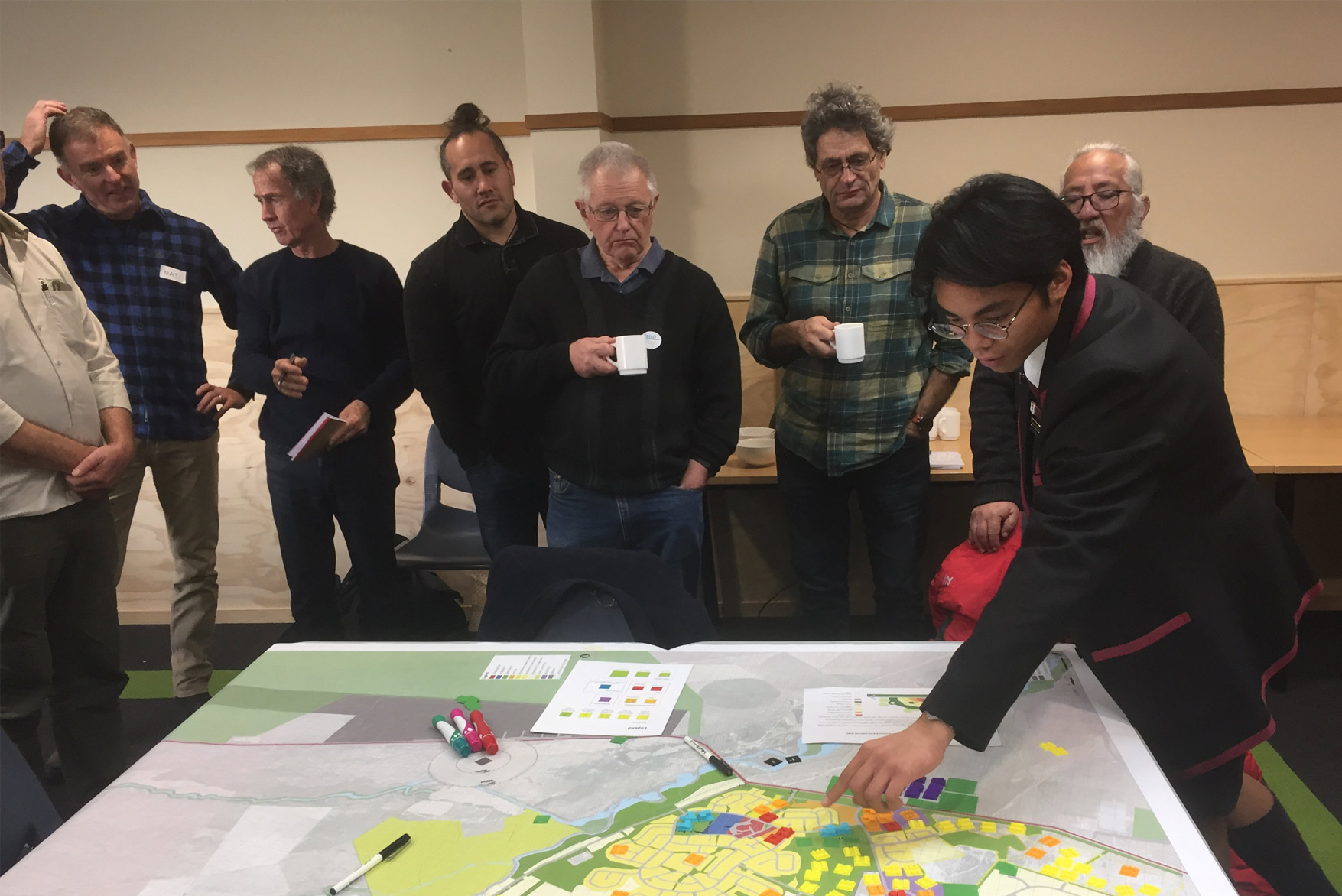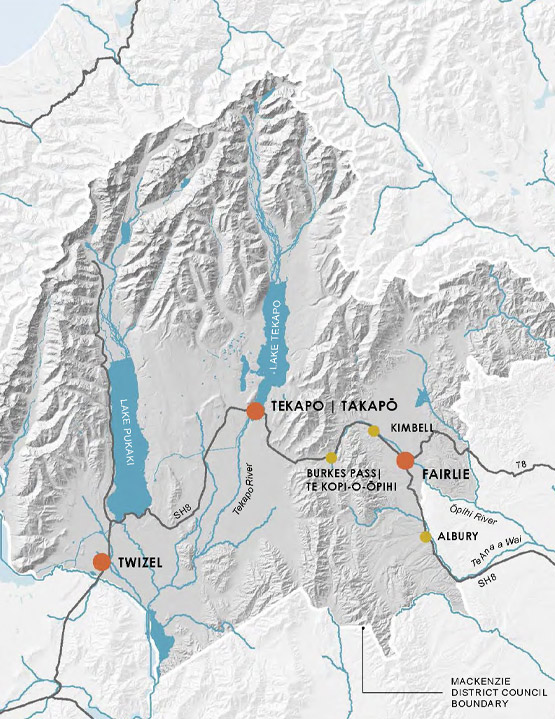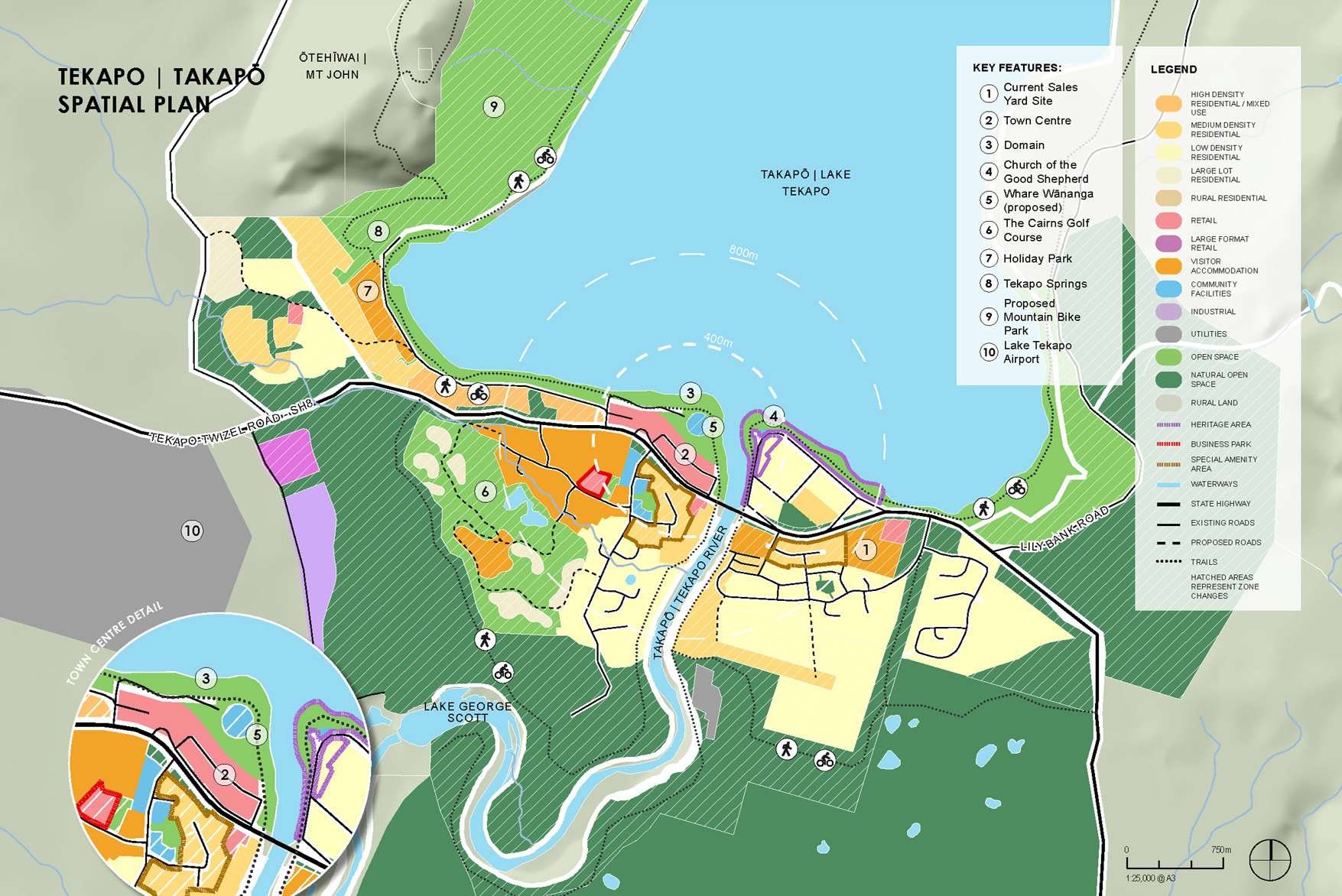The Mackenzie Spatial Plans have a 30-year horizon, ensuring planning and infrastructure investment keeps pace with projected growth. By taking a long-term approach, the plans ensures the townships and rural settlements are enhanced as places for people, ensuring growth can occur in a way that benefits the local community and improves the environment.
The Spatial Plans had five main aims:
- Understand what the future holds for each town;
- Integrate existing strategies and projects to ensure the outcomes reflect Mackenzie District values;
- Inform and facilitate the District Plan Review;
- Enable the Mackenzie District Council to get ahead of growth; and
- Ensure the community is engaged throughout the process.
Working in collaboration with project partners, our team worked through a methodical, evidence-based process that put community at its heart, ensuring they reflect the ideas, wishes and aspirations of the people who have a connection with the District.
Boffa Miskell’s urban designers and landscape architects facilitated targeted community and stakeholder spatial plan optioneering workshops.
We provided technical guidance and designed interactive engagement exercises to empower participants to appraise different approaches to growth and develop short list options. Our team informed the engagement and complemented the feedback with good practice design principles, contextual analysis and yield calculations, including the use of GIS mapping software.
Combined with Business Case processes and tools, we refined all the inputs into the final spatial plans and concisely communicated the processes and outcomes of the project into a highly graphic document, which was presented to Council for endorsement.
The Mackenzie Spatial Plans will now be used to inform future public and private investment in each town and the land use zoning for each area in the District Plan.
We provided Urban design, landscape architecture; GIS; community engagement services.


